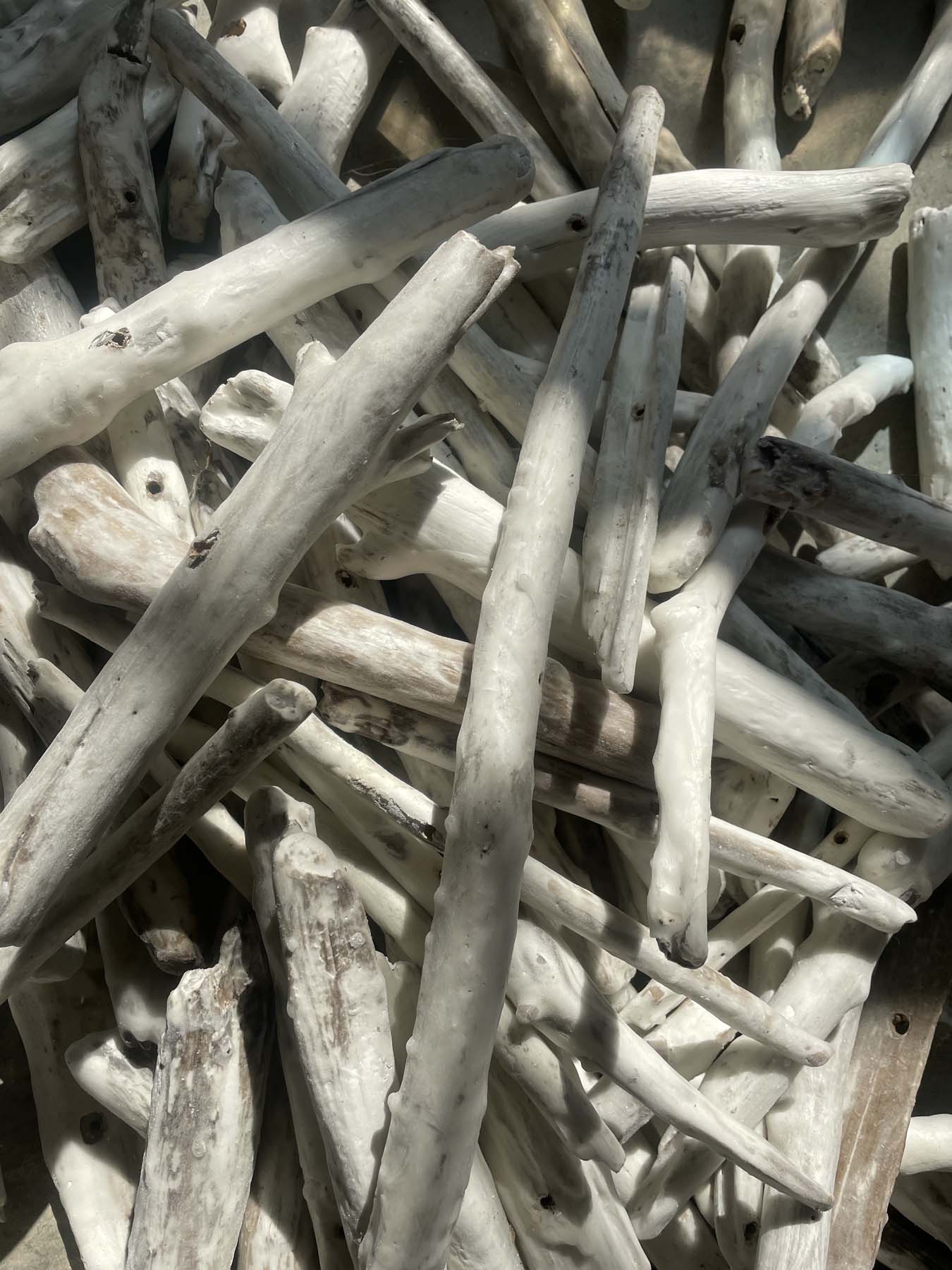

Nancy Winship Milliken (Charlotte, Vermont, b. 1962– )
In collaboration with Eliot Hays Lothrop (Huntington, Vermont, b. 1978– )
Lake Bones, 2021–22
Charred wood post and beam, Lake Champlain shoreline and tributary driftwood, limestone, water glass, and steel
Courtesy of the artist
The driftwood Winship Milliken gathered for Lake Bones was harvested along the shorelines of Lake Champlain and its tributary streams and rivers. After water, wind, and sun first shape and smooth the wood into abstracted forms, Winship Milliken returns the timber to the land and to its original, upright orientation. The artist honors this transformative process and the wood’s new identity by applying a white limestone wash. Coated in this material commonly found in Shelburne, the irregularly shaped driftwood is unified through its new sheen and shared metamorphic journey.
While there are many ecological benefits of both living trees in watersheds and dead trees that end up as driftwood in streams and lakes—including providing habitats for insects—Lake Bones challenges viewers to consider the importance of the forests, waterways, and watersheds themselves. In the face of climate change, Winship Milliken says, healthy watersheds, forests, floodplains, riparian areas and wetlands provide ways to “increase resiliency and reduce [the] impacts from flooding and stormwater.” Climate change is predicted to result in increased frequency and intensity of flooding in the Lake Champlain Basin. Lake Bones calls upon viewers to be informed and mindful stewards of these important systems.
View process images of this work here: